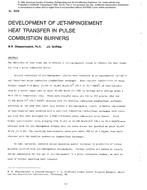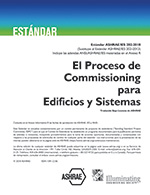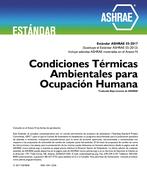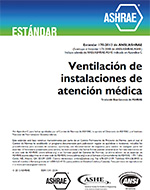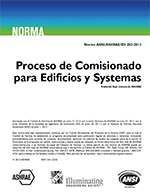Description
The objective of this study was to develop a jet-impingement system to enhance the heat transfer from a pulse combustion burner.
Several variations of jet-impingement sleeves were installed in an experimental cylindrical (baseline) pulse combustion chamber/heat exchanger. Heat-transfer capabilities of these designs ranged from about 15,700 to 16,900 Btu/h•ft2 (49.5 to 53.3 kW/m²) of heat-transfer area at a burner input rate of about 40,000 Btu/h (11.7kW) in heating water through about a 90 F (50 C) temperature rise . These heat-transfer rates are 25% to 34% greater than the 12,600 Btu/h•ft² (39.7 kW/m²) obtained with the baseline combustion chamber/heat exchanger operating at the same heat input rate without a jet-impingement sleeve. A similar improvement in heat-transfer rate occurred with a cast-iron combustion chamber/heat exchanger with internal fins that were developed for a high-efficiency pulse combustion water heater. Still higher heat-transfer rates [ranging from 21,600 to 22,300 Btu/h•ft² (68.1 to 70.3 kW/m²)] were obtained with the jet-impingement designs when the pulse burner was operated at about 60,000 Btu/h (17.6 kW). The resulting heat-transfer rates were about 24% to 36 % higher than th6be obtained with the baseline combustion chamber/heat exchanger.
In some instances, unstable burner operation and/or increases in production of carbon monoxide occurred with jet-impingement arrangements. Further studies are needed to clearly define limitations for the use of jet-impingement in a pulse combustion chamber, as well as ways of further improving heat transfer.
Maximum temperatures of the jet-impingement sleeve were about 1100 F (590 C), suggesting that a low-alloy stainless steel such as type 430 would be a suitable material for this component. A corrugated-steel insert was pressed tightly between the inner jet-impingement sleeve and the outer steel shell of the experimental combustion chamber/heat exchanger in an attempt to reduce the inner-sleeve temperature by heat conduction to the outer shell. This arrangement did not reduce inner-sleeve temperatures.
Units: Dual
Citation: ASHRAE Transactions, 1986, vol. 92, pt. 2A, Portland, OR
Product Details
- Published:
- 1986
- Number of Pages:
- 11
- File Size:
- 1 file , 870 KB
- Product Code(s):
- D-PO-86-3009
